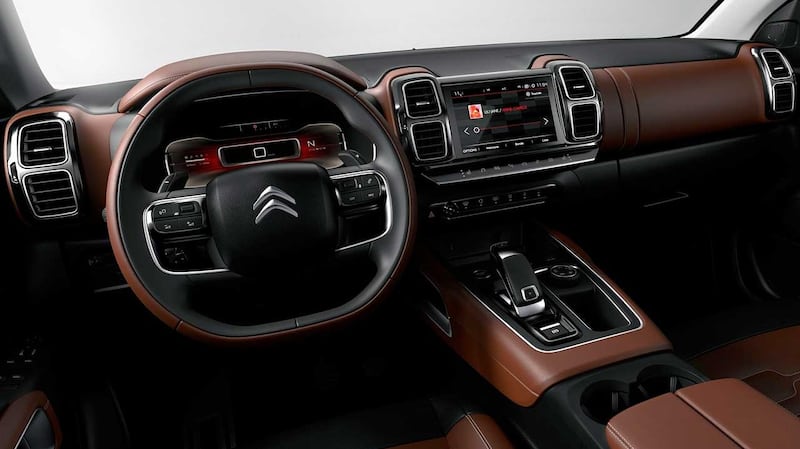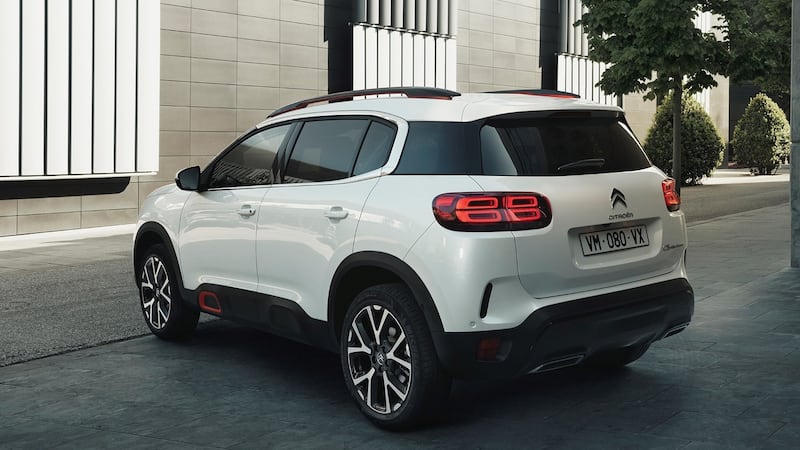Citroen reckons it has found a sweet spot in the family crossover segment not yet properly served: comfort. And who better to play the comfort car than Citroen, a car company whose heritage revolves around soft and bouncy cars of yore.
The French brand has always had to strong cards to play: quirky styling and soft and supple suspension systems. After years of trying to weld other characteristics to its cars the current management team arrived at the then troubled brand and brought a big dose of logic to the future plans. Stick to what you are good at and what people like about your products. It’s amazing how such obvious messages get lost in senior management boardrooms these days.
So we come to the latest C5 Aircross, claiming to deliver comfort to the crossover class, something the French claim has been sorely lacking to date.
Rivals will strongly disagree, of course, and they'll have a point: the Nissan Qashqai, Hyundai Tucson or Skoda Karoq are hardly riders, but Citroen's ambition is for a magic-carpet ride thanks to a rather ingenious suspension set-up combined with incredibly comfy seats.
First launched in China over a year ago, the C5 Aircross is set to finally land on these shores in February. It retains many key design traits from the rest of the range, with an exterior that breaks away from the stock SUV styling of rivals, being far less ruggedly aggressive than the rest. It doesn't try to pretend it's a hardcore off-roader, but opts instead to retain the bulk of such cars but bring some clean, smooth lines to the car. The end result is a very fetching exterior that stands out from the crowd.
Living-room theme
Inside, Citroen's recently departed design chief Alexandre Malval opted for a mobile living-room theme, summed up in some of the most sofa-like seats fitted to any car outside the €100,000 luxury class. Malval is a bit of a design star in the automotive world and rightly so. He has been at the heart of Citroen's revival over the last five years, when the brand had little else to offer buyers aside from some funky styling. In September Daimler poached Malval to head its new future design studio. Citroen has appointed Pierre Leclercq, a veteran of BMW, Ford and Kia, as its new head of design. He's got strong pedigree, but given the importance of Malval's role in reviving the chevron brand, a lot of responsibility now rests on Leclercq's shoulders.
The C5 Aircross, meanwhile, is not just a homage to Malval’s work at Citroen. The French brand is also proud of some engineering traits on the new car, such as its so-called Progressive Hydraulic Cushion Suspension. Bear with us through this explanation. Basically, the traditional solid ‘bump-stops’ that control the suspension’s movement in large impacts have been replaced by a hydraulic ‘cushion’. That cushion’s job is twofold – on normal, small bumps it allows the suspension more freedom of movement, with the spring and damper working together but separately to control the car’s movements. On bigger impacts the spring and damper work as one, slowing down the suspension’s movement and reducing the impact to the cabin of the car.
The hydraulic cushion also means that if the full movement of the suspension is needed, the final impact into the bump-stop is slower and better controlled and the impact is dissipated out rather than being transmitted into the car’s structure. Ultimately it means the car soaks up the worst excesses of the road. And it works, up to a point.
In most instances you do float along over the worst undulations. However, it's not infallible. We tested it on a set route of wildly mixed road conditions we use to test all new cars once a year in northern Denmark. At speeds of 80km/h the car coped well with the steady stream of potholes, but when it encountered a varied range of bumps and yumps the suspension seemed out of sync with the road. That resulted in more pitch and roll than we expected on a car that hangs so much of its reputation on comfort.

The real issue is the impact it has on the car's handling. For all its supple ride, the steering feel is just not there compared with some rivals. It's a shame, for much of its underpinnings are shared with the award-winning Peugeot 3008, but the steering sharpness of the Pug has not transferred as well to the good-looking Citroen.
Certainly on motorway stretches the C5 Aircross is a pleasure to drive and if your needs are lugging family around then this car will deliver in spades. Practicality is also impressive on this front, with ample room for three decent-sized adults across the back and a better boot than many rivals.
The cabin has its problems. The touchscreen system is unforgivably slow and unresponsive. I’ve encountered microwave ovens with faster processing chips than this. Abandoning the smart physical buttons of the Peugeot 3008 for flush buttons is also a big mistake. These don’t add to the sitting-room feel of the car; they just pile up the frustration.
Both the petrol and diesel engine options are well married to the car, and automatic is the preferred choice in both. It’s not the greatest auto box on the market, but it’s a vast improvement on the previous Citroen semi-automatic offerings, which were frankly horrific.
Comfort claims
The big-selling comfort claims for the C5 Aircross are perhaps its undoing, promising more than any car in this price bracket can deliver without some compromise in driving dynamics. There remains a sizeable gap in this market for a car that can offer soft, supple ride quality with sharp and accurate steering feel. Family hatchbacks have mastered this trait – some at least – but no one has yet managed to master it on these higher-set crossovers. And that’s actually one of the reasons we continually critique the crossover class.

For all that, those with their heart set on a crossover should be happy with the Citroen. In terms of looks it breaks the unoriginal template of rivals to offer something smart, stylish and distinctive. In turn the cabin is airy, spacious and a bit of fun. Those seats are proper benchmarks in comfort. It’s like sitting on a couch that has been covered in a thick, downy duvet.
The car looks great and we would have been more admiring of its engineering had we not experienced what its underpinnings could deliver in the form of its Peugeot sibling. This takes those traits and trades off some sharper dynamics for supposedly added comfort. The end result left us feeling a little shortchanged on the back roads, even if it is a floating ride on the motorway and around the town.
Prices have yet to be confirmed but we expect them to land in the early €30,000 range to compete with the key market leaders. For that money it seems a good buy.
Citroen is definitely on an upward swing, with four new dealers appointed in Ireland in the last six months. It has the pedigree and in-house talent to deliver on the traits of comfort and quirky styling and with too many drab, identikit crossovers on the market a dose of French flair is warmly welcomed. Hopefully designer Alexander Malval's departure to Daimler will not be a setback to the brand's grand plans.











